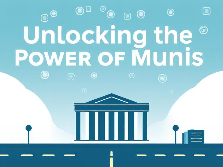
Why Does Access to Education in Kenya and Sudan Difference ?
Introduction
Access to education is universally recognized as a fundamental human right and a critical driver of economic and social development. Yet, in Africa, disparities in access to education remain stark—particularly between neighboring countries like Kenya and Sudan. While both nations are located in Eastern Africa and share certain cultural and historical similarities, their education systems diverge widely due to a complex intersection of political, social, economic, and historical factors. In this blog post, we take a deeply researched, human-centered look at Why Does Access to Education in Kenya and Sudan Difference, exploring the nuanced realities on the ground in each country.
Historical Overview of Education in Kenya and Sudan
Kenya:
Kenya’s education system has its roots in British colonial rule, with missionary schools paving the early paths to formal education. Post-independence in 1963, the government prioritized expanding access, investing heavily in a structured 8-4-4 education system. Over the decades, Kenya’s focus on education as a tool for national development has led to improved literacy rates and school attendance.
Sudan:
Sudan’s history with education is turbulent. After gaining independence from Anglo-Egyptian rule in 1956, the country was immediately plunged into decades of civil conflict between the North and South. These prolonged wars disrupted schooling for generations. Even after South Sudan’s independence in 2011, conflict in Sudan has persisted, leaving an indelible mark on its education infrastructure.
Government Policy & Investment in Education
Kenya:
Kenya has continuously emphasized free and compulsory primary education. Since 2003, the introduction of Free Primary Education (FPE) policies drastically improved school enrollment. Government spending on education averages about 5% of GDP, according to the World Bank.
Sudan:
In contrast, Sudan’s education spending is considerably lower—just 1-2% of GDP—reflecting other national priorities, often skewed toward defense due to prolonged instability. Educational policy shifts with each political transition, limiting long-term planning and investment.
Socioeconomic Factors Impacting Access
In both nations, poverty is a barrier, but the extent and effect differ dramatically.
- In Kenya, families still face challenges affording school uniforms, books, and lunch, but many communities benefit from local and international aid programs.
- In Sudan, poverty is more widespread and systemic, with many families prioritizing basic survival over schooling. In some regions, school infrastructure is almost non-existent.
A 2024 UNICEF report noted that over 3 million children in Sudan are out of school, while Kenya has made significant progress reducing its out-of-school rate below 10% for primary education.
Conflict, Displacement & Instability (Focus on Sudan)
Conflict is perhaps the most defining factor in Sudan’s education crisis. Years of civil war, the Darfur conflict, and recent military coups have created environments where attending school is often impossible. Schools have been destroyed, teachers have fled, and children are frequently displaced.
According to UNHCR, Sudan has over 6 million internally displaced persons (IDPs), many of whom are children without access to consistent education.
Meanwhile, Kenya, although not without tribal tensions or terrorist threats (such as in border regions like Garissa), has remained relatively stable. The government has been able to enforce education policies and build resilience into the schooling system.
Progress and Reforms (Focus on Kenya)
Kenya’s education system has evolved. In 2017, the government began transitioning from the 8-4-4 system to the Competency-Based Curriculum (CBC). This shift aims to align education with practical skills and market demands.
Moreover, Kenya has integrated digital education initiatives like Digital Literacy Programs for early learners. Partnerships with companies like Google and Huawei have enabled rural access to technology—a luxury unimaginable in most parts of Sudan.
Gender Disparities in Access to Education
Kenya:
Gender parity in primary education is near equal. Programs such as “Wings to Fly” and school feeding programs have helped keep girls in school, particularly in arid regions.
Sudan:
Girls face far steeper challenges. Child marriage, cultural norms, and insecurity lead many girls to drop out early. Only 35% of girls complete primary school in conflict-prone regions like South Kordofan and Darfur. According to Save the Children, girls in Sudan are twice as likely to be married before age 18 than to finish school.
Role of NGOs and International Aid
In both countries, NGOs play crucial roles—but their reach and impact differ.
- Kenya benefits from coordinated aid programs with measurable goals, such as USAID’s Tusome Early Grade Reading Program.
- Sudan, however, suffers from restricted humanitarian access in conflict zones. Many aid agencies have withdrawn due to safety concerns, severely limiting educational outreach.
Key Differences Summarized
| Factor | Kenya | Sudan |
|---|---|---|
| Political Stability | Relatively stable | Highly unstable |
| Education Budget (% GDP) | ~5% | ~1-2% |
| Conflict Impact | Localized (e.g., terrorism near borders) | Nationwide war and displacement |
| Out-of-School Children | <10% primary-age | Over 3 million children |
| Gender Parity | Near equal in primary levels | Severe disparity, esp. in rural/conflict zones |
| NGO Access | Broad and coordinated | Limited and restricted |
Conclusion: Toward Equal Access
Understanding the stark differences in educational access between Kenya and Sudan requires looking beyond simple statistics. It’s about lived realities—families dodging conflict zones in Sudan, or rural Kenyan girls walking miles to attend school thanks to local aid support.
While Kenya’s progress is far from perfect, it offers a model of what sustained investment, policy stability, and peace can do. For Sudan, a meaningful change will depend on political resolution, international support, and a deep cultural re-commitment to educating the next generation.
Education is not just about classrooms—it’s about the future of a people.
✅ FAQs
Q1: Why is education access more successful in Kenya than Sudan?
Because Kenya has had relative political stability, better education funding, and a consistent government policy that prioritizes universal primary education.
Q2: What role does conflict play in Sudan’s education gap?
Conflict disrupts schooling by displacing families, destroying infrastructure, and creating unsafe environments that make regular attendance impossible.
Q3: How does gender affect education in both countries?
In Sudan, girls face more barriers due to cultural norms and early marriage. In Kenya, initiatives have made gender parity more achievable.
Q4: Can NGOs help solve education inequality in Sudan?
Yes, but only if safety conditions improve and access to conflict zones is granted. Long-term stability is also crucial.
Q5: What can be done to improve access in both countries?
Increased investment, peace-building, teacher training, and inclusive policies can help reduce disparities.






